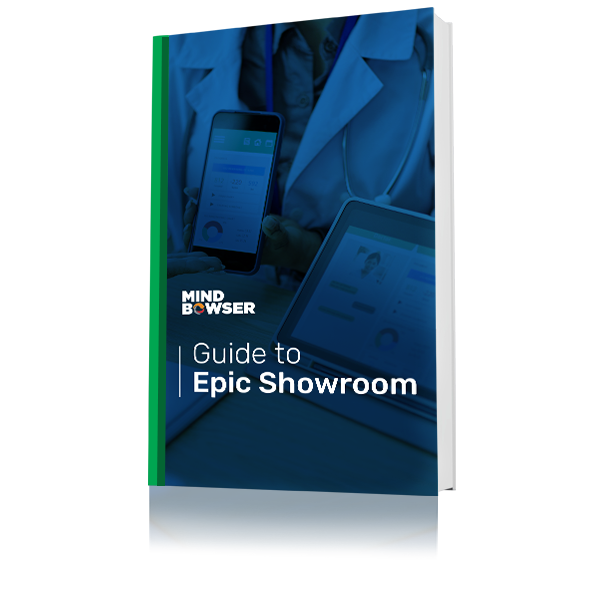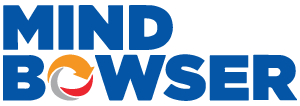Epic Systems is one of the most widely adopted electronic health record (EHR) platforms in the United States, trusted by hospitals and health systems for its comprehensive capabilities and deep clinical workflows. Known for supporting specialties across the continuum of care, Epic offers a suite of modules that help providers deliver more coordinated and efficient healthcare.
One of these modules is Epic Lumens, a solution designed specifically for gastroenterology and endoscopy teams. As endoscopic procedures become more data-intensive and documentation-heavy, tools like Lumens are helping clinicians streamline their workflow while keeping the focus on patient care.
In this blog, we’ll take a closer look at what Epic Lumens is, how it fits into the Epic ecosystem, and why it matters for hospitals and GI practices today. Whether you’re a clinical leader, an IT administrator, or evaluating how to modernize your endoscopy services, this guide will offer practical insights into Lumens’ capabilities and its potential value for your organization.
Epic Lumens is Epic’s dedicated endoscopy module built to support the specific needs of gastroenterology and procedural documentation. Integrated directly into the broader Epic EHR ecosystem, Lumens is used to document and manage endoscopic procedures such as colonoscopies, upper GI exams, and flexible sigmoidoscopies—all within the patient’s longitudinal medical record.
Unlike standalone endoscopy reporting systems, Lumens is embedded in the same platform used for inpatient, outpatient, and specialty care, ensuring clinicians have immediate access to the patient’s full medical history and current status.
Designed with input from GI specialists, the module focuses on three main goals:
Lumens is not just a documentation tool—it’s an operational bridge between clinical care, administrative workflows, and enterprise-level reporting, helping gastroenterology teams operate more efficiently while maintaining compliance and quality standards.
Epic Lumens is purpose-built to support the demands of gastroenterology practices by combining structured documentation with clinical usability. Below are some of the standout features that make Lumens valuable for endoscopy teams:
Lumens offers pre-configured SmartForms tailored to common gastrointestinal procedures, such as colonoscopies and upper endoscopies. These forms standardize documentation, minimize variation between providers, and allow teams to complete notes quickly without compromising clinical detail. Providers can pull forward relevant patient information, enter findings with just a few clicks, and ensure key quality metrics are captured along the way.
During a procedure, images and videos captured from the endoscopy system can be directly embedded into the patient’s chart through Lumens. This visual documentation supports accurate interpretation, helps in peer reviews or consultations, and serves as a clear reference for follow-up care.
Rather than relying on free-text entries, Lumens uses structured data fields that align with documentation standards. This makes it easier to extract key procedure elements for billing, coding, and quality reporting. It also ensures consistency across providers and locations, which is critical in large health systems.
Lumens integrates seamlessly within Epic Hyperspace, enabling clinical teams to manage everything from pre-procedure checklists and informed consent to recovery notes and discharge planning, without switching systems. Orders, vitals, nursing notes, and follow-up instructions all stay connected in one place.
For providers who prefer speaking over typing, voice recognition tools integrated with Lumens can be used to dictate procedure details. In certain configurations, natural language processing (NLP) tools facilitate the conversion of dictated content into structured fields, enabling teams to maintain documentation standards without slowing down their workflow.

Learn how to showcase your app to thousands of Epic-integrated healthcare providers. From eligibility and API access to certification and launch, this guide walks you through every step to boost visibility, credibility, and adoption within the Epic ecosystem.
Epic Lumens isn’t just a documentation tool. It’s designed to improve clinical operations, compliance, and patient care in gastroenterology departments. Here’s how healthcare organizations benefit from implementing Lumens:
With built-in templates and structured workflows, Epic Lumens helps providers capture comprehensive, accurate notes more efficiently. The ability to embed procedural images, auto-populate common fields, and follow evidence-based prompts leads to stronger clinical documentation, without slowing down the provider.
By integrating directly with the broader Epic platform, it eliminates the need to jump between systems or duplicate data entry. Nurses, technicians, and physicians can all work from the same record. This reduces administrative burden, shortens charting time, and allows teams to turn over procedure rooms more quickly.
Epic Lumens is aligned with billing codes and regulatory frameworks such as CPT and ICD. It prompts providers to complete required documentation and supports accurate charge capture, helping reduce claim denials and audit risk. This also supports quality reporting initiatives tied to reimbursement.
Because Lumens keeps everything—from pre-procedure history to post-procedure instructions—within the same record, clinicians have a clearer view of the patient journey. This continuity supports better decision-making, improves handoffs between departments, and helps ensure timely follow-up care.
In one implementation, our team supported a rehabilitation solution that integrated real-time device data directly into the Epic system. This allowed clinicians to track patient recovery metrics within the EHR, enabling them to make timely interventions and improve care coordination. The same principles—real-time data flow, structured documentation, and care team visibility—are directly applicable to how GI departments can use Epic Lumens to manage post-procedure follow-ups and drive better patient outcomes.
Epic Lumens is specifically designed to support the fast-paced, high-volume environment of GI practices. From routine screenings to complex diagnostic procedures, it enables teams to work more effectively while keeping clinical quality and patient safety at the forefront.
Lumens accommodates a range of endoscopic procedures—including colonoscopy, EGD, flexible sigmoidoscopy, and more. Each procedure type comes with documentation tools tailored to its workflow, ensuring that essential findings, measurements, and images are accurately and consistently recorded.
For colonoscopies, Lumens helps track key quality indicators, including bowel preparation, withdrawal time, adenoma detection, and biopsy sites. These data points are not only important for documentation and billing but also feed into quality metrics that GI departments monitor closely. Lumens helps make sure those details aren’t overlooked.
Endoscopy doesn’t happen in isolation. Lumens integrates with Epic’s scheduling tools, so procedure appointments are synced with staff and room availability. It also interfaces with pathology orders and lab results, allowing providers to link biopsy findings directly to the procedure record. Radiology images, lab data, and patient history from EpicCare are accessible at the point of care, enabling GI teams to work from a comprehensive clinical picture.
One of the defining strengths of Epic Lumens is its seamless integration across Epic’s ecosystem. Instead of existing as a standalone product, Lumens functions as part of a larger, interconnected workflow, ensuring that endoscopy care is not siloed but fully embedded within the patient’s continuum of care.
Lumens supports integration with endoscopy hardware, image capture systems, and scope tracking tools. Images and videos captured during procedures can be stored alongside structured findings. Many organizations also configure Lumens to interact with anesthesia documentation systems and third-party PACS platforms, keeping all perioperative data in sync.
Because it’s part of the larger Epic infrastructure, Lumens contributes to analytics dashboards, population health tools, and clinical quality initiatives across the enterprise. For example, data captured in Lumens can be used to inform colorectal cancer screening reports or GI-specific quality benchmarks, without requiring a separate database or reporting tool.


Many GI practices still rely on legacy systems or standalone software for documenting endoscopic procedures. While these tools may get the job done, they often create fragmentation, requiring double entry, extra clicks, and disconnected workflows. Epic Lumens changes that dynamic by integrating the endoscopy experience directly into the EHR.
Traditional systems typically require separate logins, manual data syncing, or exporting notes back into the EHR. Lumens eliminates that friction. Providers document procedures within the same interface they use for clinical notes, medications, and labs. It reduces steps, minimizes errors, and ensures that everyone—from GI techs to surgeons to coders—is viewing the same record.
While Lumens is implemented within the larger Epic deployment (which is often on-prem or hosted in private clouds), its workflow benefits are similar to cloud-native systems in terms of accessibility and responsiveness. Organizations working toward Epic-as-a-Service models can expect Lumens to function fluidly within those environments.
The most significant difference is that Lumens is not an add-on—it’s an extension of Epic’s core. This means that all documentation, orders, results, and images from an endoscopy procedure are stored in the same location as the rest of the patient’s chart. That unified record supports better communication, fewer missed steps, and more coordinated care across departments.
While Epic Lumens offers meaningful advantages for GI departments, adopting it isn’t a plug-and-play decision. Like any EHR module rollout, it requires thoughtful planning, collaboration across teams, and a clear understanding of what success looks like.
Deploying Lumens involves more than turning on a new screen. It requires configuration to match the workflows of your endoscopy suite, especially if you have multiple providers with different documentation habits. From SmartForm customization to device integration, the build-out phase can be time-consuming and should involve close coordination between clinical leadership and IT.
For GI teams used to legacy tools or dictation-heavy workflows, there can be a learning curve. Success depends heavily on upfront training and ongoing support. Organizations that invest in on-the-floor guidance during go-live tend to see better adoption and fewer frustrations. Lumens is intuitive, but it’s still a change, and changes need champions.
As part of the Epic suite, Lumens may not require a separate license; however, the cost is incurred in the form of build effort, training, and potential hardware upgrades. However, most organizations recover that investment through improved billing accuracy, reduced administrative overhead, and better quality reporting capabilities. Understanding the total cost of ownership—beyond just software—is essential to making a sound decision.
Epic Lumens isn’t just for large hospital systems. It’s a strong fit for any organization using Epic that seeks to streamline endoscopy workflows, enhance documentation, and eliminate operational silos.
If your facility is already running Epic for inpatient, ambulatory, or specialty care, Lumens is a natural extension. It allows your GI team to work within the same system they use for labs, radiology, scheduling, and follow-ups—no need to manage a separate software stack or bolt-on system.
GI practices that rely heavily on data—from pathology turnaround times to quality metrics for colorectal cancer screenings—will benefit from Lumens’ ability to connect every touchpoint. From scope tracking to biopsy results, it brings the full clinical picture into one place.
For those responsible for system architecture and clinical workflow design, Lumens offers long-term gains in efficiency, scalability, and standardization. It supports enterprise reporting, feeds analytics platforms, and reduces the need for separate system maintenance. In short, it simplifies the tech stack while improving clinical alignment.
Whether you’re digitizing endoscopy for the first time or replacing an aging standalone system, Lumens deserves a look—especially if you’re already committed to the Epic environment.
Implementing Epic Lumens successfully isn’t just about switching on a module—it’s about ensuring your workflows, data flow, and clinical outcomes align. That’s where we come in.
At Mindbowser, we work exclusively with healthcare organizations to help them modernize their operations and deliver better care through the integration of smart technology. Whether you’re adding Epic Lumens to your existing build or launching endoscopy documentation within Epic for the first time, we make the transition smoother.
We are an officially recognized Epic-approved vendor. This means we’ve met Epic’s high standards for technical capability, data security, and compliance, ensuring we can work closely with your internal teams while meeting the platform’s integration requirements.
From SMART on FHIR apps to HL7 messaging and API-based automation, our team understands the complexity of working inside Epic’s ecosystem. We’ve helped clients implement custom documentation tools, integrate imaging workflows, and connect patient-facing platforms like MyChart with backend systems.
We’ve developed a suite of proprietary solution accelerators that help reduce implementation time:
These tools allow us to move faster while still aligning with Epic’s architecture and policies.
We provide hands-on assistance from discovery and planning to build, validation, and go-live. Post-launch, we’re available for training support, optimization, and App Orchard guidance if your organization is developing custom applications alongside Epic modules.
With 100% focus on healthcare, we’ve worked with hospitals, GI practices, and digital health startups across the country. We understand the pressures you face, staffing, compliance, documentation, and throughput, and we design solutions that don’t just meet IT checkboxes but improve how care gets delivered.
If Epic Lumens is on your roadmap, or you’re trying to decide if it should be. Mindbowser can help you plan, implement, and scale with confidence.

Epic Lumens provides gastroenterology teams with a powerful way to integrate endoscopy workflows directly into the EHR. By combining procedure-specific documentation, image integration, and structured reporting within the Epic environment, Lumens helps clinicians work more efficiently while maintaining high standards of care, compliance, and coordination.
For organizations already using Epic, Lumens is a natural next step—especially for GI departments seeking to unify their workflows, improve charge capture, and reduce operational friction. And with the right integration partner, that transition doesn’t have to be disruptive.
At Mindbowser, we help healthcare teams implement modules like Epic Lumens with clarity and control. From Epic-certified integration support to post-go-live optimization, we ensure every step serves your clinical and operational goals.
Epic Lumens is not a standalone product. It’s a specialized module within the Epic EHR ecosystem, designed to work seamlessly alongside other Epic tools like EpicCare, MyChart, and Beaker. It relies on the broader Epic infrastructure for data access, scheduling, and reporting.
Yes, Epic Lumens can be configured to integrate with external endoscopy equipment, image capture systems, and PACS. Most implementations involve collaboration between IT, Epic analysts, and device vendors to ensure smooth image ingestion and documentation alignment.
Implementation timelines vary based on your existing Epic setup, documentation needs, and customization requirements. On average, it can take several weeks to a few months, including planning, build, testing, and training. Working with an experienced integration partner like Mindbowser can help accelerate the process while ensuring clinical alignment.

We worked with Mindbowser on a design sprint, and their team did an awesome job. They really helped us shape the look and feel of our web app and gave us a clean, thoughtful design that our build team could...


The team at Mindbowser was highly professional, patient, and collaborative throughout our engagement. They struck the right balance between offering guidance and taking direction, which made the development process smooth. Although our project wasn’t related to healthcare, we clearly benefited...

Founder, Texas Ranch Security

Mindbowser played a crucial role in helping us bring everything together into a unified, cohesive product. Their commitment to industry-standard coding practices made an enormous difference, allowing developers to seamlessly transition in and out of the project without any confusion....

CEO, MarketsAI

I'm thrilled to be partnering with Mindbowser on our journey with TravelRite. The collaboration has been exceptional, and I’m truly grateful for the dedication and expertise the team has brought to the development process. Their commitment to our mission is...

Founder & CEO, TravelRite

The Mindbowser team's professionalism consistently impressed me. Their commitment to quality shone through in every aspect of the project. They truly went the extra mile, ensuring they understood our needs perfectly and were always willing to invest the time to...

CTO, New Day Therapeutics

I collaborated with Mindbowser for several years on a complex SaaS platform project. They took over a partially completed project and successfully transformed it into a fully functional and robust platform. Throughout the entire process, the quality of their work...

President, E.B. Carlson

Mindbowser and team are professional, talented and very responsive. They got us through a challenging situation with our IOT product successfully. They will be our go to dev team going forward.

Founder, Cascada

Amazing team to work with. Very responsive and very skilled in both front and backend engineering. Looking forward to our next project together.

Co-Founder, Emerge

The team is great to work with. Very professional, on task, and efficient.

Founder, PeriopMD

I can not express enough how pleased we are with the whole team. From the first call and meeting, they took our vision and ran with it. Communication was easy and everyone was flexible to our schedule. I’m excited to...

Founder, Seeke

We had very close go live timeline and Mindbowser team got us live a month before.

CEO, BuyNow WorldWide

Mindbowser brought in a team of skilled developers who were easy to work with and deeply committed to the project. If you're looking for reliable, high-quality development support, I’d absolutely recommend them.

Founder, Teach Reach

Mindbowser built both iOS and Android apps for Mindworks, that have stood the test of time. 5 years later they still function quite beautifully. Their team always met their objectives and I'm very happy with the end result. Thank you!

Founder, Mindworks

Mindbowser has delivered a much better quality product than our previous tech vendors. Our product is stable and passed Well Architected Framework Review from AWS.

CEO, PurpleAnt

I am happy to share that we got USD 10k in cloud credits courtesy of our friends at Mindbowser. Thank you Pravin and Ayush, this means a lot to us.

CTO, Shortlist

Mindbowser is one of the reasons that our app is successful. These guys have been a great team.

Founder & CEO, MangoMirror

Kudos for all your hard work and diligence on the Telehealth platform project. You made it possible.

CEO, ThriveHealth

Mindbowser helped us build an awesome iOS app to bring balance to people’s lives.

CEO, SMILINGMIND

They were a very responsive team! Extremely easy to communicate and work with!

Founder & CEO, TotTech

We’ve had very little-to-no hiccups at all—it’s been a really pleasurable experience.

Co-Founder, TEAM8s

Mindbowser was very helpful with explaining the development process and started quickly on the project.

Executive Director of Product Development, Innovation Lab

The greatest benefit we got from Mindbowser is the expertise. Their team has developed apps in all different industries with all types of social proofs.

Co-Founder, Vesica

Mindbowser is professional, efficient and thorough.

Consultant, XPRIZE

Very committed, they create beautiful apps and are very benevolent. They have brilliant Ideas.

Founder, S.T.A.R.S of Wellness

Mindbowser was great; they listened to us a lot and helped us hone in on the actual idea of the app. They had put together fantastic wireframes for us.

Co-Founder, Flat Earth

Mindbowser was incredibly responsive and understood exactly what I needed. They matched me with the perfect team member who not only grasped my vision but executed it flawlessly. The entire experience felt collaborative, efficient, and truly aligned with my goals.

Founder, Child Life On Call

The team from Mindbowser stayed on task, asked the right questions, and completed the required tasks in a timely fashion! Strong work team!

CEO, SDOH2Health LLC

Mindbowser was easy to work with and hit the ground running, immediately feeling like part of our team.

CEO, Stealth Startup

Mindbowser was an excellent partner in developing my fitness app. They were patient, attentive, & understood my business needs. The end product exceeded my expectations. Thrilled to share it globally.

Owner, Phalanx

Mindbowser's expertise in tech, process & mobile development made them our choice for our app. The team was dedicated to the process & delivered high-quality features on time. They also gave valuable industry advice. Highly recommend them for app development...

Co-Founder, Fox&Fork
